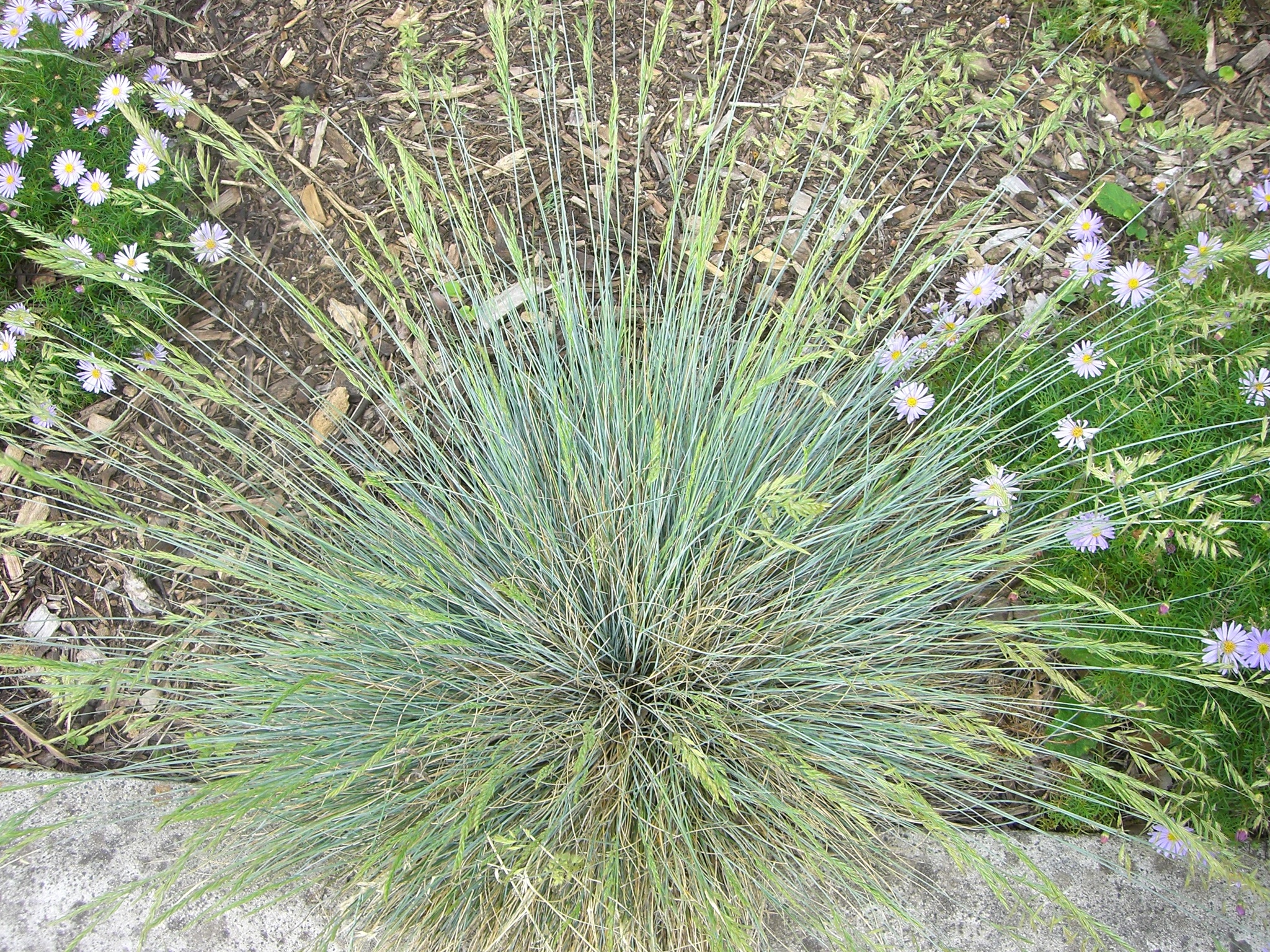
Latin name for stem, and for an ancient weed that grew among the barley.
Tufted or rhizomatous perennial grasses. Leaves flat or rolled, narrow or broad, rolled in bud. Ligule membranous, truncated. Inflorescence an open or contracted panicle. Spikelets with (2-) 4 or more florets, laterally flattened, without hairy callus. Glumes 2, very unequal, awnless, lower glume 1-3 nerved, upper glume (1-) 3-5 nerved. Lemma with or without a more or less terminal awn, largely hairless, 3-7 nerved. Palea relatively long, apically notched, awnless, 2-nerved, 2- keeled.
Generally grown as either pasture or turf grasses, or ornamentally as the waxy blue foliaged F. glauca.
The variable range of species encountered makes a key of dubious value.
Seed.
A component of turf.
Similar to Poa but distinguished by the dorsally rounded lemmas (keeled in Poa) and the very narrow, long hilum (round in Poa).
About 360 species from tropical montane, subtropical and temperate regions. Australia has about 7 native and 5 naturalised species.
Source: (2005). Poaceae. In: . Horticultural Flora of South-eastern Australia. Volume 5. Flowering plants. Monocotyledons. The identification of garden and cultivated plants. University of New South Wales Press.
